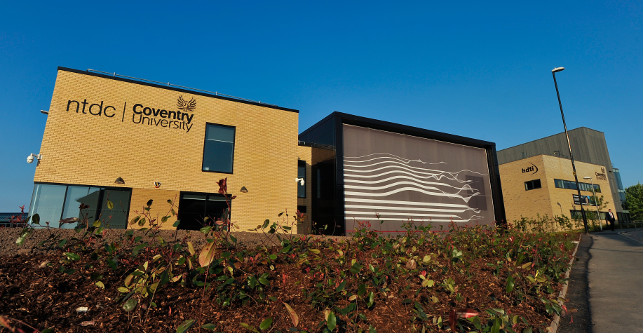
An image of ‘Movement’, a mural created by Jaguar’s director of design, Ian Callum, to commemorate the National Transport Design Centre (NTDC)
The National Transport Design Centre (NTDC) is a state-of-the-art facility, operating within Coventry University’s existing Centre for Mobility and Transport. Officially opened in May 2017, the multi-million pound centre of design excellence is supporting UK innovation in the transport industry and providing greater opportunities for designers to join the automotive, aerospace, rail and marine worlds.
The centre is set to meet a range of needs from across industry, with a focus on collaborative research projects, postgraduate education in transport design, and support for the UK’s high-value manufacturing sector and its supply chain to improve design capability.
The 1800m2 facility will be based around a large design studio, equipped with state of the art technology for articulating design in both physical and virtual form, and will include a 15m clay milling facility, a 6m wide 3D immersive virtual reality power wall and a 3D projection mapping system, which can cast digital images onto 3D objects below – helping designers to assess how multiple options would appear on full-scale models, as well as a multitude of other modelling technologies.
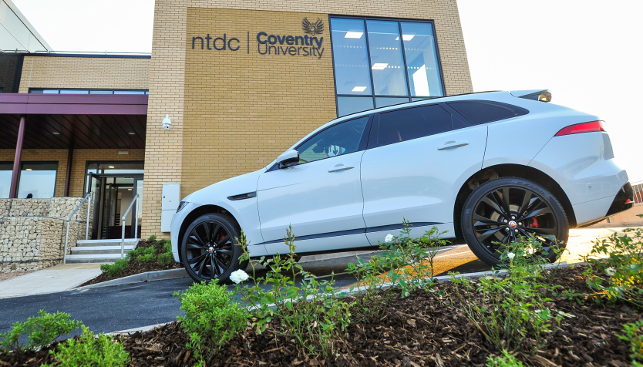
The entrance to Coventry University’s NTDC
D3D: How does the UK fit into the global transport design landscape at present?
DW: From the days of Isambard Kingdom Brunel through to Sir Alec Issigonis and, more recently, James Dyson, the UK has an enviable reputation throughout the world for innovative design. Our reputation for creativity and flair, especially in the area of transport design, is perhaps only rivalled by the Italians, who are known for their style and passion.
Go to any automotive design department in the US, China, France or Germany and you’ll find a healthy proportion of Brits talking by the water cooler!
So our design heritage is strong, and the UK is currently on track to build more than two million cars by 2020 according to the Society of Motor Manufacturers and Traders (SMMT), breaking the previous record of 1.92 million set in 1972; but this position is unlikely to be sustained unless we continue to invest in our designers of tomorrow.
The global transport design industry is remarkably competitive and the £7m investment in the NTDC is a vital injection into the feedstock of the UK’s talent pool.
D3D: With the UK’s position in Europe about to change, how is it likely to affect transport design on these shores and further afield?
DW: Clearly, a poorly executed Brexit will discourage international students from considering the UK as a place to study – which could have a negative impact on our reputation.
The richness of the UK’s current transport and automotive design community is reflected in the diversity of overseas students we see at the NTDC. This abundance of skills and cultures is what makes the UK such a vibrant centre for design and must not, in my opinion, be threatened by Brexit.
A hard Brexit will not only erode our intellectual capital, but also reduce valuable income from overseas students keen to study in our country.
Clearly, securing a clear and stable post-Brexit environment will enable the UK to gain greater autonomy from the EU, while not damaging the vital flow of talent that we need to maintain world leadership in transport design.
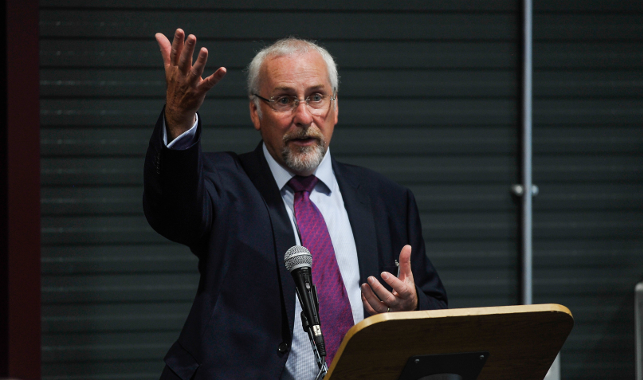
David Wright addressing attendees at the launch of the £7 million facility
D3D: The UK has a strong heritage in all of the key transport types (automotive, aerospace, rail and marine), which of these do you believe will undergo the greatest engineering and design changes in the near future?
DW: Given the breathtaking progress made in the development of autonomous and electric vehicles in recent years, the area of road transportation has captured the imagination of designers. I believe that all areas of transport design will change significantly in the next decade, but the key trends, such as light weighting, aerodynamics and material design, will be pioneered by vehicle design.
D3D: What is the NTDC’s overall outlook, and what is it offering to companies in the wider transport sector?
DW: The NTDC’s core belief is that collaboration is central to great design. Operating in an academic ivory tower is a sure fire way to develop thinking that is outdated and no longer relevant. Clearly, we want the opposite – modern, relevant, innovative thinking.
We’re passionate about our links with industry and work hard to maintain strong relationships with vehicle manufacturers, the marine industry and rail operators. We also ensure we engage with our vibrant internationally recognised alumni, which comprises some of the most respected names in automotive and transport design.
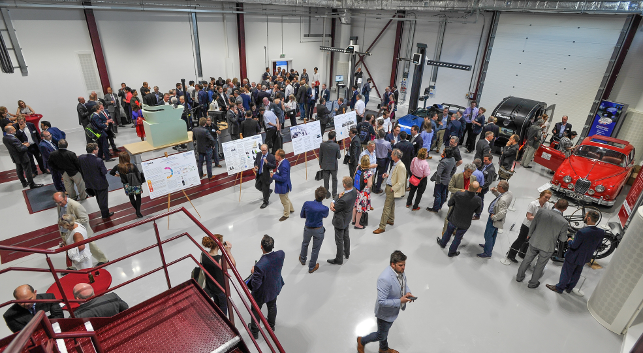
The studio space, complete with clay milling facilities
D3D: What design and engineering technologies do you see as most important to the near future of the industry?
DW: Three technologies that are most important to UK transport design are additive manufacturing, virtual design tools (such as power walls) and the more traditional skills of clay modelling. While the increasing adoption of additive manufacturing in vehicle design is well appreciated, the use of power walls and other visualisation tools is a good way of sharing designs across teams.
This aspect of design – collaboration – is vital to the UK’s future success and using relevant technologies that encourages this culture is important.
Finally, the traditional technology of clay modelling is often overlooked in today’s digital world, but is still an incredibly sought-after skillset, especially in automotive design.
The NTDC has invested in both new and established technologies to ensure our students are well versed in all aspects of world-class design.
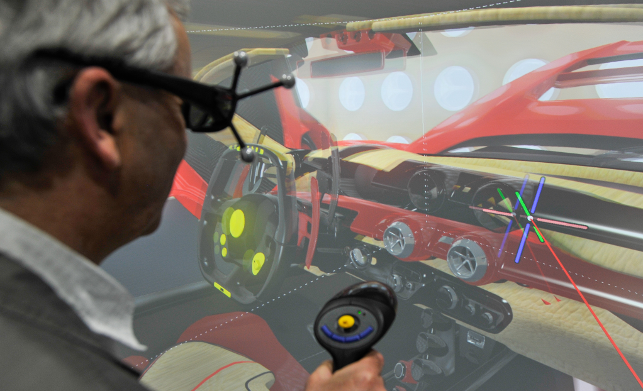
An attendee at the launch event getting to grips with 3D modelling
D3D: What else needs to be done to ensure the UK continues to be a leader in this field?
DW: Institutions such as the NTDC have been established to encourage innovation, collaboration and passion in our design skills base.
To ensure this rich heritage continues to thrive, we need central government to recognise the huge contribution design plays in our country’s economic performance.
Design IP and the value of creative thinking needs to be protected – and the most appropriate mechanism for this to happen is probably via the government’s long-awaited Industry Strategy, which is due for publication later this year.
With the right support and encouragement from government, UK design can continue to flourish, creating jobs and prosperity – as well as great planes, trains, boats and automobiles!
The man behind the recentley opened National Transport Design Centre
Default






